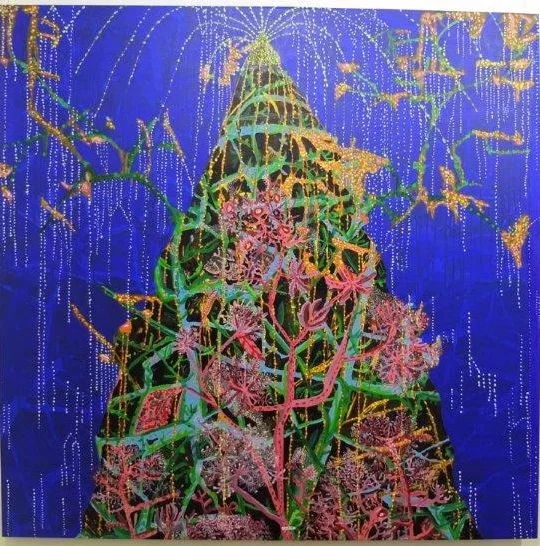Today’s fast urban-metro life, dependent on numerous screens, often reduces to competing with time and life, and in that circle of survival and indulgence with relentless consumption of material and psychological, the human psyche usually forgets its primordial values to nature and the environment. The symbiotic relationship with nature diminished long ago and while the powerful human harps for more and more, some radical and artistic minds are fighting for the cause.
Manjit Gogoi grew up near the enchanting Kaziranga National Park, Assam and in his words, his family has always been conscious, and careful of the environment and the forest around which they lived. Through the years of growing up, he witnessed the expansion of city life into the greens, the humans reducing the forest land for the needs of the overflowing capitalism; which has been one of the major areas the artist talks about through his wor


Manjit learned the craft of working with bamboo, clay, and cane in the manner of indigenous local crafts of Assam. Then, upon shifting to Mumbai for higher studies, the materials and expression changed and became a voice of resistance and poetic contemplation, honed with masterly craft.
He started to visit construction sites and thus found his preferred materials in the gigantic city, where there was no shortage of growing concrete giants. After the collection of the materials, he processes them in the studio with chemicals like copper sulfate and others, and purifiers and creates works in several sculptural formats. The importance of mundane materials found from the leftovers of the city is being transferred into a new visual language in Manjit’s studio. The vast range of materials covers e-waste, plastic waste, found materials to charcoal, wood powder, brick powder created from construction site materials.


Not restricting himself to a particular form, the artist is experimenting in his visual language, while championing the voice of sustainability and resistance, talking about safeguarding the environment. In the series ‘Anthropogenic Impact on Habitats’, we see his fascination with a cartographical view and also developing an original material language. In a series dedicated to the plight of animals in the Kaziranga forest, he depicted the various forms of animals engulfed with the gray of concrete and bricks, while the green gradually reduced from a central holding entity to a fringe element.
The use of materials through metaphorical storytelling is also another area the artist delves into with curious, experimental eyes. Like one of his earlier ‘Untitled’ wood carving works, his works are often with juxtaposed imagery and motifs, he presents a narrative drenched in surreal dichotomy, asking the viewers to take part in the narrative. This is also reflected in other works like ‘Urban Ecosystem’ or ‘A Conflict Wave towards Mangroves’, where he ponders upon environmental phenomena found in the city of Bombay and uses found materials in an innovative manner to build a story much-needed and relevant in today’s time.


Gogoi’s art serves as a testament to the importance of environmental consciousness. By repurposing materials and crafting narratives, he sparks dialogue on sustainability and resistance in the face of ecological challenges.



